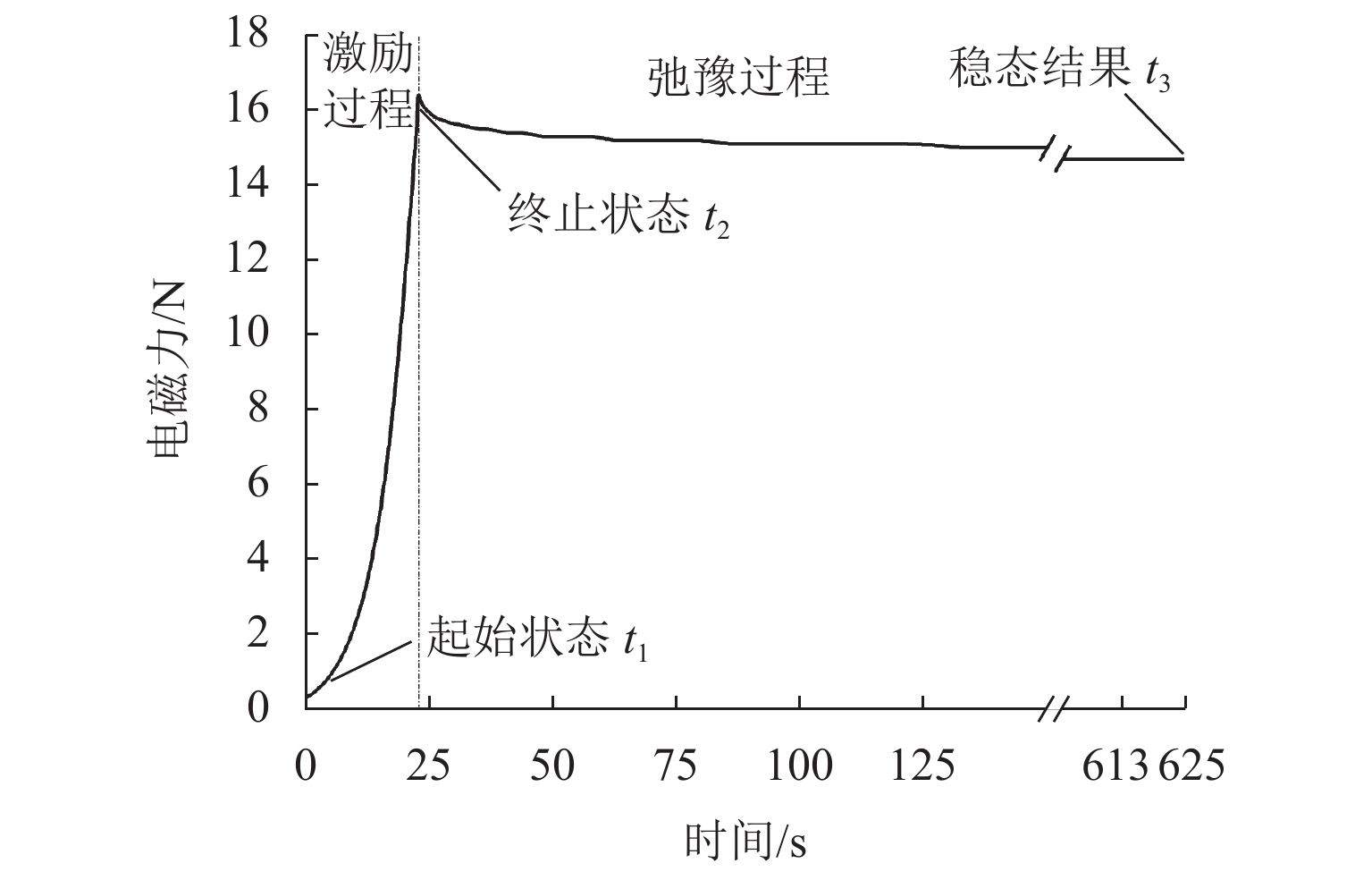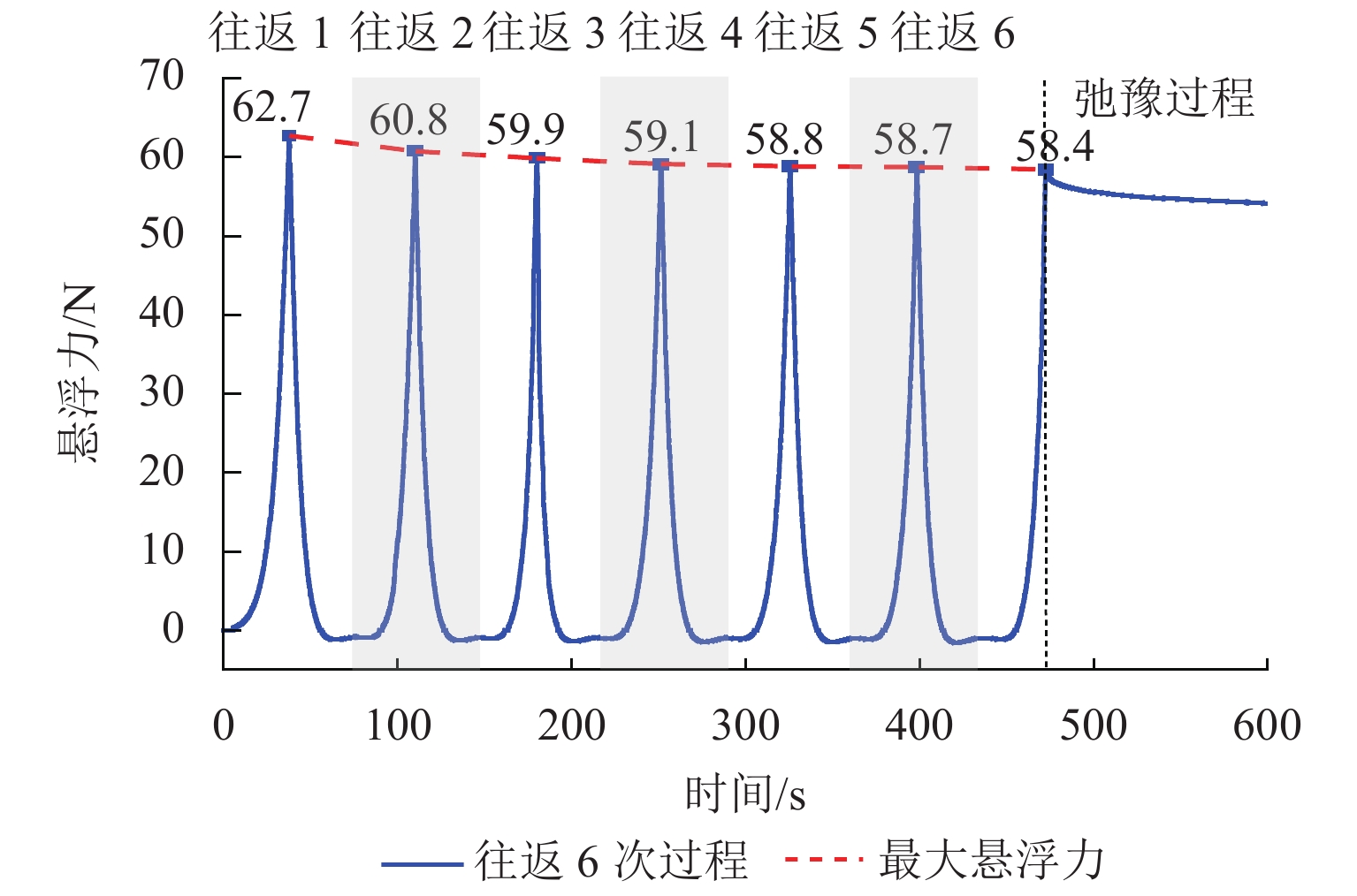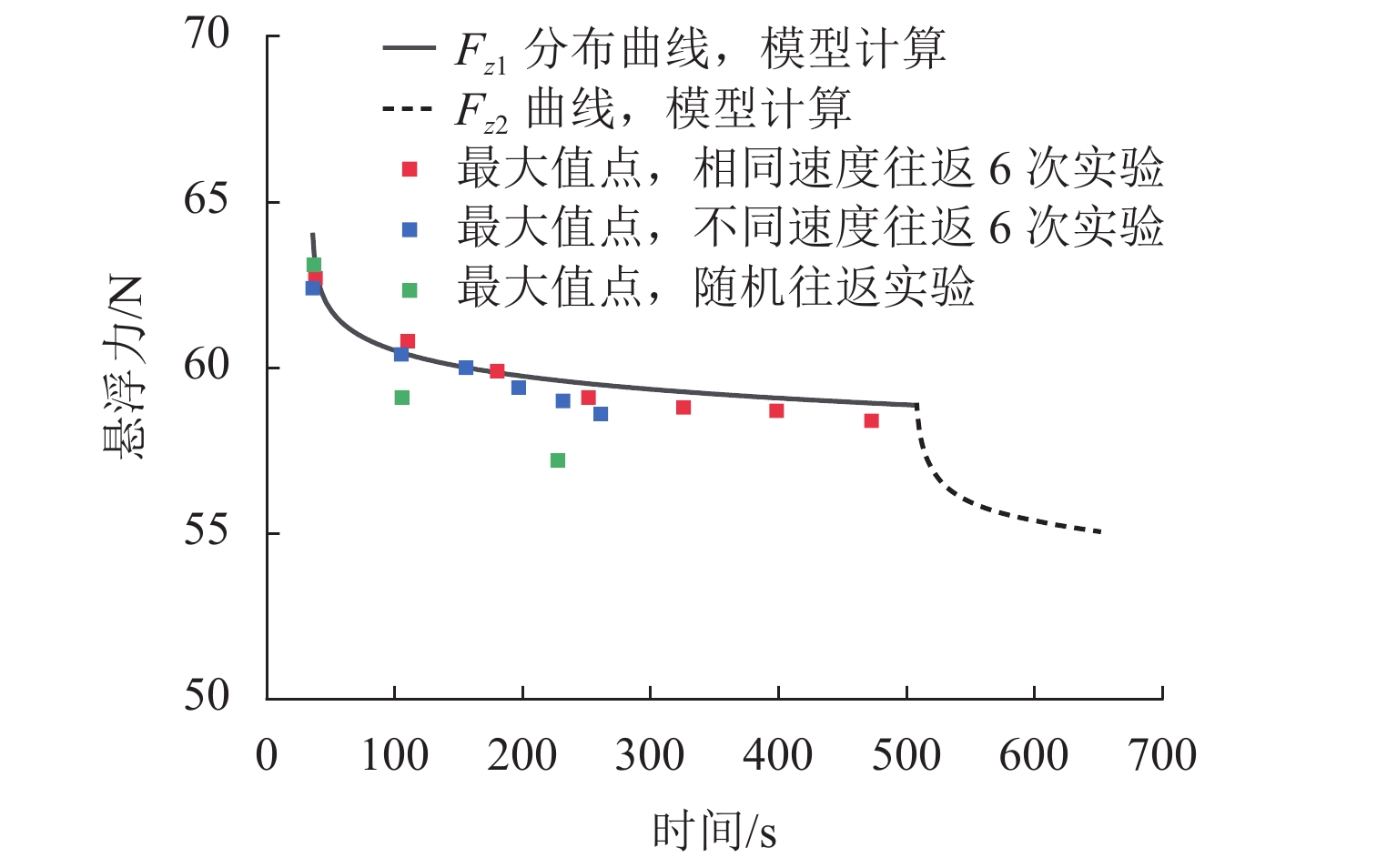Quasi-Static Force Relaxation Characteristics of High Temperature Superconducting Magnetic Levitation
-
摘要:
为了研究顶部籽晶熔融织构法制备的钇钡铜氧超导块材在Halbach永磁轨道上的准静态悬浮力弛豫特性,定义了弛豫完整过程,划分为激励过程(含起始状态、中间过程、终止状态)、弛豫过程和稳态结果;在激励过程起始和终止状态相同时,通过搭建的悬浮力测试装置,研究了复杂中间过程对稳态结果的影响;基于磁化和Anderson-Kim模型建立了弛豫分析模型,对力弛豫规律进行分析和总结. 研究结果表明:4种不同中间过程位移形式的稳态结果趋于一致,但位移过程中的最大悬浮力受到往返次数以及速度的影响,其中最大悬浮力点分布在随时间对数衰减的曲线周围;弛豫过程前终止状态的悬浮力与移动速度正相关,经过弛豫过程后的稳态结果趋于一致,而弛豫过程后以不同移动速度重复往返一次,移动速度对最大悬浮力的影响明显减弱(最大悬浮力差值由3.7 N降低为2.0 N);超导体在激励过程和弛豫过程中皆存在弛豫现象,而移动速度以及往返次数对最大悬浮力的影响结果是激励过程力弛豫的表现.
Abstract:To investigate the quasi-static force-relaxation characteristics of a YBCO bulk levitated above a Halbach permanent-magnetic guideway, using the top-seed-melt-texture-growth method, the complete relaxation process is defined and divided into the excitation process (involved initial state, dynamics process, and termination state), relaxation process, and steady state. With the same initial and termination states, the effect of different displacements of the dynamics process on the steady state is experimentally investigated using a specialized apparatus. Then, on the basis of magnetization and the Anderson-Kim model, a relaxation model is established and several laws are formulated. The results indicate that the steady states of the four displacements tend to be the same. However, the maximum levitation force (MLF) is affected by the round-trip times and displacement velocity. The MLF points are distributed around a curve that decays logarithmically with time. Prior to the relaxation process, the levitation force of the terminating state is positively correlated with the velocity; the steady state results after the relaxation process tend to be consistent. Furthermore, after the relaxation process, the influence of the velocity on the MLF is greatly reduced (the MLF difference decreases from 3.7 N to 2.0 N). Relaxation phenomena are in both the excitation and relaxation processes of superconductors, and the effect of the velocity and round-trip times on the MLF is manifested in the relaxation during the excitation process.
-
处于超导混合态的高温超导体钇钡铜氧(YBCO)陶瓷由于磁通钉扎特性在永磁轨道外磁场中能实现自稳定悬浮,基于该物理现象研制的高温超导磁悬浮(钉扎磁浮)列车具有被动自稳定的优越特性. 其悬浮和导向无须额外通电并能够实现静止悬浮,因此能量损耗和发热小,液氮浸泡冷却方式也有效降低系统制冷难度[1]. 自1987年伴随高温超导体诞生以来,这一新兴磁浮制式一直受到研究者关注. 来自中国[2-4]、德国[5]、巴西[6]、意大利[7]等国的学者和工程师经过近三十年的努力,使该新型载运工具不断成熟和发展. 2021年1月13日,世界首台高温超导高速磁浮工程化样车及试验线正式在西南交通大学启用,标志着超导钉扎高速磁浮工程化研究从无到有的突破.
作为一种新型载运工具,高温超导磁悬浮列车需满足安全、平稳、稳定、环保等要求. 但是高温超导磁悬浮独特的电磁特性给工程应用带来诸多挑战. 被动自稳定悬浮起源于YBCO的超导和磁通钉扎特性;而材料非线性电阻特性(或称E-J关系)和轨道非均匀磁场使电磁作用力呈现强烈非线性特征[8];磁通钉扎特性还使得电磁力具有磁滞和弛豫现象[9];YBCO临界电流密度(Jc)的复杂性也阻碍高温超导磁悬浮的分析和计算[10].
弛豫现象对列车的影响不能忽视,弛豫现象是指在超导体内的电场、磁场以及相应电磁力随时间呈现“先快后慢”并最终平稳的缓慢衰减过程. 从电场角度分析,根据超导体E-J关系,外磁场变化在超导体内激励电场和电流,但超导体的等效电阻不为0,而是快速衰减的微弱电阻,进而导致能量耗散,因此,在电流与外磁场作用的电磁力上出现力弛豫现象. 从磁通运动角度分析,量子化的磁通线穿入超导体,由于存在热激发,磁通线有一定概率从一个钉扎中心跳到另一个钉扎中心,趋势为使超导体内非均匀分布的磁通线向均匀分布运动. 因此即使没有相对运动,超导体内的磁通线仍旧会缓慢地运动,称之为“磁通蠕动”. 磁通蠕动的过程对应超导体内磁弛豫过程. 磁弛豫必将引起超导体电流密度随时间发生变化并导致力弛豫. 力弛豫一般指悬浮力的弛豫,这对于车辆系统便意味着悬浮高度的下降,因此该工况需要抑制. 另一方面,通过力弛豫也可以反求解Jc[11].
与其他因素相比,关于力弛豫研究较少. 早期,Moon等[12]便指出存在力弛豫,Riise等[13]指出力弛豫遵从随时间对数衰减. 后来,Qin等[14]研究了YBCO块材在对极式和Halbach轨道上方不同移动速度下的力弛豫,得出如下结论:1) 悬浮力在200 s内衰减15%以上;2) Halbach轨道上的悬浮力衰减更小[14]. Starikovskii等[15]研究了YBCO堆叠带材的力弛豫特性. Sotelo等[16]研究了长时间的力弛豫特性,结果表明经过24 h的弛豫,悬浮力从1950 N衰减为1680 N,衰减比例为13.8%并逐渐趋于稳定,并预测经过30 d的弛豫,悬浮力仅将缓慢下降到1600 N左右;Yuan等[17]也指出经过数小时的弛豫后悬浮力衰减幅度很小. Postrekhin等[18-20]分别从仿真和试验以及解析计算角度说明,超导体移动速度对弛豫存在影响,具体为移动速度越快,悬浮力及弛豫越大,但经过弛豫后趋于一致. 王璐琳[21]研究了不同场冷高度和悬浮高度时的力弛豫,并指出超导体先下降再返回后,弛豫会出现缓慢增长而非衰减的现象. 为了抑制弛豫衰减,一方面可以通过提高超导体的Jc,超导体的磁通钉扎性能与Jc正相关,磁通钉扎抑制磁通蠕动,进而抑制弛豫. 而提高Jc的方式有降低温度、人工引进钉扎中心等方式. 预载(pre-load)也是一种弛豫抑制方法[22-24],可通过将悬浮体先运动到低于悬浮高度处的某一位置,然后再上升到预定的悬浮高度来实现.
现有的弛豫研究中,往往对静置弛豫过程较为关注,弛豫前超导体经历简单下降或者往返运动过程,这是最简单理想的工况. 而在实际应用中,超导体往往经历移动—静置—移动—静置—移动的复杂交替状态再进行弛豫. 移动的过程复杂,且每段静置时长也不相同. 而这种运动过程对最终弛豫结果的影响尚待研究. 因为目前力弛豫尚无一个完整、统一的定义或界定,阻碍了力弛豫的系统分析,所以为了研究该问题,首要的是对力弛豫过程进行详细定义, 然后利用精确悬浮力测试装置进行实验,之后根据实验结果建立弛豫模型进行分析讨论,最后对研究进行总结,提炼出对实际应用有指导意见的结论.
1. 准静态力弛豫过程的定义
1.1 高温超导磁悬浮系统
高温超导磁悬浮系统主要由超导体和永磁体组成(图1). 其中超导体进入超导态,而永磁体提供外磁场. 超导体在永磁体的非均匀外场中移动,受到阻碍其运动的力,从而产生悬浮现象. 在当前的工程应用中,超导体主要采用YBCO块材,由灌注在低温容器中的液氮进行冷却;而外磁场主要由钕铁硼(NdFeB)永磁体依据Halbach阵列排列而成的永磁轨道(PMG)提供. 本文的坐标系设置如图1所示:y轴为沿着轨道延伸的纵向;z轴为垂向;x轴为横向;坐标原点设置在永磁轨道上表面的中点. 超导体受到的垂向力、横向力、纵向力相应地称为悬浮力、导向力、磁阻力. 悬浮高度定义为超导体下表面到永磁轨道上表面的垂直距离,随着悬浮高度的下降,超导体受到的悬浮力近似指数增长,而超导体在最低高度处会受到最大悬浮力.
1.2 力弛豫
超导体在某一磁场位置进行场冷(field cooling,FC)并进入超导态;超导体位移,超导体的磁场状态发生变化产生感应电流,与轨道磁场作用产生电磁力;将超导体静置不动,超导体的电磁力因电磁特性弛豫而随着时间发生变化. 典型的力弛豫曲线如图2所示. 当前的力弛豫并无严格的定义和界定. 为了方便后续研究,本文对力弛豫的各阶段定义如下:
1) 激励过程
超导体移动并在体内激励出感应电流并产生电磁力的过程(t1—t2). 其中起始时刻t1的磁场状态称为“起始状态”;而终止时刻t2的磁场状态称为“终止状态”,两者之间的位移过程称为“中间过程”.
2) 弛豫过程
超导体在激励过程之后保持静置进行力弛豫的过程(t2—t3).
3) 稳态结果
经过一段时间t3的弛豫过程后,超导体达到的相对稳定结果. 本文设定经过600 s弛豫过程后的结果为稳态结果.
对本文的力弛豫研究界定. 一是本文中涉及的力弛豫为准静态力弛豫,即激励过程中的位移缓慢(速度小于0.1 m/s),且超导体的散热条件良好,因此可以忽略热量对电磁特性的耦合影响. 二是超导体由测试装置夹持,悬浮高度由测试装置决定,只存在力衰减而不存在悬浮高度下降,即超导体非自由悬浮状态.
2. 实验方案
首先通过实验方法研究相同的激励过程起始和终止状态下,复杂的中间过程对稳态结果的影响. 本节主要介绍实验相关的设备、超导体样品、永磁轨道以及实验流程等技术细节.
2.1 实验设备
为获取超导体在永磁轨道上方悬浮力随时间变化的数据,如图3(a)所示,采用自主搭建的悬浮力快速测试装置进行实验. 装置的力量程为 ±300 N,测试精度为0.1 N. 该装置特点是,在传统步进电机驱动之外还可通过摇轮改变超导体高度,增加位移灵活度,搭配数显位移标尺可有效提升测试效率. 装置通过控制器实现电机行程控制以实现超导体在不同速度下各种垂直位移,并通过计算机准确记录悬浮力随时间变化情况.
2.2 超导样品
本文采用一块由顶部籽晶熔融织构方法制备的YBCO块材,见图3(b),样品临界温度为93 K,尺寸为30 mm × 30 mm × 10 mm. YBCO块材由液氮浸泡冷却. 样品水平放置.
2.3 永磁轨道
实验采用由5块NdFeB42稀土永磁体按照Halbach阵列排布而成的永磁轨道,x-z横截面具体磁体排列方式以及尺寸如图3(c)所示. Halbach阵列可以使磁场主要分布在轨道上方一侧,提高了磁场利用率和磁悬浮性能,因此是目前应用最广泛的轨道形式[25]. 在理想Halbach轨道中(不含铁磁材料),如果忽略端部效应,轨道磁场B随着高度的降低指数增长,水平和竖直磁场分量(Bx和Bz)随着横向位置呈正弦(余弦)变化,两者具有90° 相位差. 而轨道延伸纵向的磁场均匀分布. 超导体沿着均匀的y轴纵向延伸移动不受到阻碍,而在x-z横截面内移动时,由于磁场的非均匀分布,产生阻碍相对运动的回复力.
2.4 测试流程
YBCO块材在永磁轨道上方(高度z=60 mm,横向x为竖直磁化磁体正上方)由液氮浸泡冷却5 min进入超导态. 经历4种不同中间过程后在z=10 mm处静置,进入弛豫过程. 即起始和终止状态相同而中间过程不同. 激励和弛豫总时长为640 s. 4种中间过程具体如下所示.
1) 超导体以速度v=1.2 mm/s竖直下降到10 mm高度,进入弛豫过程,以此来代表最简单的单一匀速下降过程.
2) 超导体以速度v=1.2 mm/s连续重复6次60 mm—10 mm—60 mm的往返位移过程,然后下降到10 mm高度进入弛豫过程,以此来代表重复匀速往返过程.
3) 超导体分别以v=1.20,1.68,2.16,2.64,3.12,3.60 mm/s速度逐渐增大连续往返6次,然后在10 mm高度进入弛豫过程,以此来代表不同速度的多次往返过程.
4) 超导体随机往返多次,然后在10 mm高度进入弛豫过程,以此来代表最一般的过程.
综合来说,测试流程的场冷高度为60 mm,最低测试高度为10 mm. 激励过程具有不同的中间过程.最终由计算机记录整个过程中的悬浮力变化情况.
3. 实验结果与讨论
3.1 中间过程对稳态结果的影响
4种不同中间过程的力弛豫变化情况如图4所示.
通过图4可以看出:相同的起始和终止状态,不同的中间过程对稳态结果影响较小. 具体来看,除了相同速度往返6次之外,其余3种位移过程的稳态结果接近(640 s时力数值分别为53.4、53.3、52.7 N).相同速度往返6次的位移过程出现偏差可归因于其位移过程耗时较长,相应地保持不动的时间最短(弛豫时间<200 s),因此相较其余3种位移形式,其悬浮力在600 s后稍大. 但是通过其弛豫变化趋势可得出,若弛豫过程总时长继续增大,最终4种位移形式的稳态结果趋于一致. 随机往返过程中包含了两次静置过程,从其曲线可以看出,中间过程是否包含静置对稳态结果影响较小.
3.2 往返次数对最大悬浮力的影响
不同中间过程的稳态结果趋于一致,而不同中间过程,超导体每一次下降到10 mm受到的最大悬浮力(即曲线的峰)皆不相同. 分析可得,影响最大悬浮力的因素主要是往返次数和移动速度.
对于往返次数,单独提取出图4中相同移动速度往返6次曲线(图5实线),激励过程中实线的每个峰代表超导体每一次往返时下降到10 mm受到了最大悬浮力. 而虚线连接每个峰值,描述多次往返的最大悬浮力变化. 可以看出,相同的往返过程重复了6次,每次经历的磁场变化相同,但到达最低高度处测得悬浮力数值不相同,呈现出与时间的相关性. 第2~7个峰值相较前一次往返,最大悬浮力依次下降了1.9、0.9、0.8、0.3、0.1、0.3 N,最大悬浮力遵循“先快后慢”的类似对数衰减形式. 分析来看,磁通蠕动不只存在于静置阶段,也同样存在于超导体运动过程中,即磁通蠕动时刻发生,并且“往返次数”这一因素并非物理因素,而应是某一深层物理因素的外在表现. 根据上述分析认为,激励过程(即运动过程中)同样存在着一种特殊的力弛豫形式,而往返次数对最大悬浮力的影响便是该特殊弛豫现象的表现.
3.3 移动速度对最大悬浮力的影响
关于移动速度对悬浮力的影响,本文设计了相应的实验. 具体的实验流程是:激励过程中,移动速度分别为v=0.12~3.6 mm/s;弛豫过程中,超导体悬浮保持不动600 s;弛豫过程结束后,超导体以激励过程的移动速度返回60 mm高度,紧接着以相同的移动速度下降到10 mm,然后返回60 mm高度处. 即首先测试一次不同移动速度对悬浮力的影响,经过弛豫过程后,再重复测试一次不同移动速度对悬浮力的影响,结果如图6所示.
由图6可以看出:弛豫过程之前,激励阶段结束时的悬浮力与移动速度正相关. 经过600 s弛豫过程后,最终稳态结果趋于一致,这与图4的研究结论吻合. 若再重复往返测试,移动速度与最大悬浮力的正相关联系减弱. 表1提取了图5中关键时刻的悬浮力数值. 其中t2和t3时刻如第1节所述,分别指激励过程终止时刻和弛豫过程结束时刻. 在此定义t4为弛豫后再次进行往返测试达到最低点的时刻,即弛豫后重复往返获得最大悬浮力时刻. 表1中:F2、F3、F4分别为t2、t3、t4时刻对应的悬浮力.
表 1 不同时刻悬浮力的比较Table 1. The comparison of levitation force at different timeN v/(m·s−1) F2 F3 F4 0.12 58.6 52.8 53.9 0.24 60.1 53.1 54.4 0.72 61.8 53.0 54.6 3.60 62.3 52.9 55.9 通过表1可以看出,未弛豫之前的移动速度v从0.12 mm/s增大到3.60 mm/s,悬浮力F2相应增大了3.7 N. 经过弛豫后,悬浮力F3趋于一致,仅相差0.3 N. 而弛豫之后重复进行往返测试,不同的移动速度的悬浮力F4只增大了2.0 N,最大值差异较弛豫之前,缩小了45.9%. 可见经过弛豫之后,移动速度对悬浮力的影响减弱. 基于此本文提出:在实际应用中,为了削弱移动速度对悬浮力的影响,预先对超导体进行弛豫是一种有效措施.
3.4 讨 论
从更本质的层面上分析,如同往返次数对悬浮力的影响,移动速度与悬浮力正相关现象也应该进一步归因于力弛豫. 激励过程同样存在特殊的力弛豫,移动速度越快,相应弛豫时间越短,因此在激励阶段结束时的最大悬浮力越大. 但是经过长时间弛豫过程,稳态结果趋于一致. 通过弛豫后再重复往返测试,移动速度对悬浮力的影响降低,也印证该结论. 该结论是在冷却条件较好、可忽略超导体的热效应情况下得出的. 若考虑热耦合,移动速度越快,磁通线运动越剧烈,磁滞损耗带来的发热会引起超导体温度升高,降低Jc并削弱悬浮力,即移动速度与悬浮力负相关. 该结论在移动速度快、块材散热环境差的条件下更容易出现. 例如,Jing等[25]研究了YBCO圆环在Halbach轨道上方的悬浮力在不同温度下(63~77 K)随着移动速度的不同(1~6 mm/s)的变化趋势,实验结果指出,在77 K和73 K,移动速度越快,悬浮力减小. 而在63 K,该影响非常微弱[26],与本文的分析一致. 综合来说,移动速度对悬浮力的影响是两种因素共同作用的结果,一是激励过程力弛豫;二是超导体自身温升,而在准静态中,力弛豫占据主导地位.
综上可知,起始和终止状态相同,在弛豫过程之前,超导体的最大悬浮力受到移动速度和往返次数的影响,更本质地,最大悬浮力受到激励过程的弛豫影响. 而弛豫过程之后,最终稳态结果则趋于一致.
4. 理论模型分析
本节将基于第3节的结果进行进一步讨论,建立一个解析模型以描述和分析上述现象.
4.1 模型建立
高温超导磁悬浮中,超导体没有外加电流. 在激励阶段,超导体在磁场中产生位移,其所受磁场发生变化,进而激励产生感应电流,超导体被磁化.
假设超导体零场冷,即初始状态磁场为0,基于磁化的超导体与外磁场相互作用产生力,对于悬浮力Fz,可表示为
Fz=m∂B∂z, (1) 式中:B为磁场模;m为超导体的磁矩,如式(2).
m=MV, (2) 式中:V为超导体的体积;M为超导体的磁化强度.
假设超导体被完全穿透,则
M=AJr, (3) 式中:A为无量纲的超导体的材料系数;J为超导体的感应电流密度;r为超导体内最大电流环的半径.
因此,激励过程终止状态时,最大悬浮力为
Fzmax=AVJr∂B∂z. (4) 式(4)描述了不考虑弛豫的最大悬浮力计算公式. 通过上述实验,唯象地认为,高温超导磁悬浮存在着两种弛豫,分别存在于激励过程和弛豫过程. 而激励过程的弛豫指最大悬浮力衰减,即认为不同移动速度以及多次往返时,最大悬浮力点分布在一条随着时间对数衰减的曲线周围.
超导体内的磁通线由于钉扎中心而不均匀分布,量子化的磁通线在热激发下有一定的概率跳出钉扎势阱,趋向于磁通线均匀分布的方向移动. 磁通蠕动使得超导体的磁矩仍旧在发生变化,即力弛豫本质上为超导体内的磁弛豫.
根据Anderson-Kim模型[27-28],磁通线的势阱能量U与感应电流密度J之间为线性关系,
U=U0(1−J/J0), (5) 式中:U0为在没有Lorentz驱动力情况下的势垒高度.
U=kTln(t/t0), (6) 式中:k为Boltzmann常数;T为绝对温度;t0为时效试跳时间.
通过式(5)、(6)可以得知电流密度J对时间t的对数关系为
J=Jc[1−kTU0ln(tt0)]. (7) 同时,为了使式(7)能在t=0时使用,通常将其改为
J=Jc[1−kTU0ln(1+tt0)]. (8) 因此,激励过程最大悬浮力Fz1的弛豫如式(9),其中,t1≤t≤t2,超导体的不均匀磁化导致了J 的不均匀分布.
Fz1=AVrJc[1−kTU0ln(1+tt0)]∂B∂z. (9) 对于弛豫过程,则是在激励过程悬浮力基础上继续进行弛豫,激励过程与弛豫过程的悬浮力曲线不连续,则弛豫过程悬浮力如式(10),t2<t<t3.
Fz2=Fz1[1−kTU0ln(1+t−t2t0)]. (10) 两个过程的弛豫衰减量分别为
Δ1=kTU0ln(1+t2t0), (11) Δ2=(1−Δ1)kTU0ln(1+t3−t2t0). (12) 根据第3节的分析,激励过程相同起始和终止状态,不同中间过程对稳态结果影响很小,而Δ1 + Δ2在不同t2和t3设定下变化很小也印证该结论.
4.2 计算结果与分析
如图7所示,提取出图4中激励阶段的最大悬浮力峰值点,与模型计算的激励阶段最大值点弛豫分布曲线进行对比可以得知:除了随机往返实验,其余最大值点都较好地分布在曲线周围. 说明前述讨论的激励过程最大值点遵从弛豫衰减规律合理. 而随机往返实验中的最大值点相对偏离了曲线,原因在于该实验的激励过程中包含静置过程,如图4中相应的曲线所示. 该随机往返的激励过程曲线实际上还包含弛豫过程,而图7中的最大值点弛豫分布曲线描述的是连续移动时最大值点分布情况,即动态弛豫曲线. 综合来看,将移动速度以及多次往返对悬浮力的影响理解为激励过程的弛豫是可行的. 这也为定量计算不同速度以及往返次数时的最大悬浮力值提供了一种方法,而不仅仅局限于当前的定量分析层面.
通过起始和终止状态可以确定准静态力弛豫的稳态结果. 而起始和终止状态主要指磁场状态,这也说明,高温超导磁悬浮的力特性具有磁场依赖性,式(9)、(10)也反映了这一点.
5. 结 论
本文主要针对高温超导磁悬浮的准静态力弛豫进行研究,主要结论如下:
1) 稳态结果与激励过程的起始以及终止状态有关,与激励过程中间位移过程关系较小.
2) 激励过程中也存在力弛豫.
3) 移动速度对悬浮力的影响是弛豫和温升两方面共同作用的结果. 在准静态以及良好散热条件下,主要由弛豫决定,移动速度越快,弛豫时间越短,悬浮力越大.
4) 往返次数对悬浮力的影响可以归结于弛豫现象. 最大悬浮力随着循环次数的增加,同样遵循着随时间对数衰减的形式.
从工程角度来看,在设计阶段,应将稳态结果而非终止状态时刻的悬浮力作为有效悬浮力.另外应用前弛豫是一种有效改善手段. 对超导体进行弛豫,可以有效降低移动速度以及往返次数对悬浮力的影响. 因为移动速度和往返次数对悬浮力的影响可以统一为激励过程的最大悬浮力弛豫,且最大悬浮力点分布在弛豫曲线上,所以在实际应用时可以依据该结论对最大悬浮力进行预测.
-
表 1 不同时刻悬浮力的比较
Table 1. The comparison of levitation force at different time
N v/(m·s−1) F2 F3 F4 0.12 58.6 52.8 53.9 0.24 60.1 53.1 54.4 0.72 61.8 53.0 54.6 3.60 62.3 52.9 55.9 -
[1] WANG J S, WANG S Y. High temperature superconducting magnetic levitation[M]. Beijing: Peking University Press, 2017: 132-133. [2] WANG J S, WANG S Y, ZENG Y W, et al. The first man-loading high temperature superconducting Maglev test vehicle in the world[J]. Physica C:Superconductivity and Its Applications, 2002, 378/379/380/381: 809-814. [3] DENG Z G, ZHANG W H, ZHENG J, et al. A high-temperature superconducting maglev ring test line developed in Chengdu, China[J]. IEEE Transactions on Applied Superconductivity, 2016, 26(6): 3602408.1-3602408.8. [4] DENG Z G, ZHANG W H, ZHENG J, et al. A high-temperature superconducting maglev-evacuated tube transport (HTS maglev-ETT) test system[J]. IEEE Transactions on Applied Superconductivity, 2017, 27(6): 3602008.1-3602008.8. [5] SCHULTZ L, DE HAAS O, VERGES P, et al. Superconductively levitated transport system-the SupraTrans project[J]. IEEE Transactions on Applied Superconductivity, 2005, 15(2): 2301-2305. doi: 10.1109/TASC.2005.849636 [6] MATTOS L S, RODRIGUEZ E, COSTA F, et al. MagLev-cobra operational tests[J]. IEEE Transactions on Applied Superconductivity, 2016, 26(3): 3600704.1-3600704.4. [7] D’OVIDIO G, CRISI F, LANZARA G. A “V” shaped superconducting levitation module for lift and guidance of a magnetic transportation system[J]. Physica C: Superconductivity and Its Applications, 2008, 468(14): 1036-1040. doi: 10.1016/j.physc.2008.05.154 [8] DENG Z, WANG J, ZHENG J, et al. High-efficiency and low-cost permanent magnet guideway consideration for high-Tc superconducting Maglev vehicle practical application[J]. Superconductor Science and Technology, 2008, 21(11): 115018.1-115018.9. doi: 10.1088/0953-2048/21/11/115018 [9] HULL J R. Superconducting bearings[J]. Superconductor Science and Technology, 2000, 13(2): 1-15. doi: 10.1088/0953-2048/13/2/201 [10] KIM Y B, HEMPSTEAD C F, STRNAD A R. Critical persistent currents in hard superconductors[J]. Physical Review Letters, 1962, 9(7): 306-309. doi: 10.1103/PhysRevLett.9.306 [11] SIAMAKI M, STOREY J G, BADCOCK R A. Towards a non-destructive method of mapping the E-J relation using force decay measurements on superconducting bulks[J]. IEEE Transactions on Applied Superconductivity, 2021, 31(5): 9000405.1-9000405.5. [12] MOON F C, CHANG P Z, HOJAJI H, et al. Levitation forces, relaxation and magnetic stiffness of melt-quenched YBa2Cu3O x[J]. Japanese Journal of Applied Physics, 1990, 29(7): 1257-1258. [13] RIISE A B, JOHANSEN T H, BRATSBERG H, et al. Logarithmic relaxation in the levitation force in a magnet-high Tc superconductor system[J]. Applied Physics Letters, 1992, 60(18): 2294-2296. doi: 10.1063/1.107034 [14] QIN Y J, LU Y Y, WANG S Y, et al. Levitation force relaxation of HTS bulk above NdFeB guideways at different approaching speeds[J]. Journal of Superconductivity and Novel Magnetism, 2009, 22(5): 511-516. doi: 10.1007/s10948-009-0449-x [15] STARIKOVSKII A S, OSIPOV M A, RUDNEV I A. Levitation properties of pre-magnetized HTS tape stacks[J]. Journal of Physics: Conference Series, 2020, 1686(1): 012058.1-012058.6. doi: 10.1088/1742-6596/1686/1/012058 [16] SOTELO G G, DIAS D H N, DE ANDRADE R, et al. Tests on a superconductor linear magnetic bearing of a full-scale MagLev vehicle[J]. IEEE Transactions on Applied Superconductivity, 2011, 21(3): 1464-1468. doi: 10.1109/TASC.2010.2086034 [17] YUAN Y H, LI J P, DENG Z G, et al. Dynamic performance of HTS maglev and comparisons with another two types of high-speed railway vehicles[J]. Cryogenics, 2021, 117: 103321.1-103321.8. doi: 10.1016/j.cryogenics.2021.103321 [18] POSTREKHIN E, MA K B, YE H, et al. Dynamics and relaxation of magnetic stress between magnet and superconductor in a levitation system[J]. IEEE Transactions on Applied Superconductivity, 2001, 11(1): 1984-1987. doi: 10.1109/77.920242 [19] 马光同. 高温超导磁悬浮三维理论模型及其数值计算研究[D]. 成都: 西南交通大学, 2009. [20] 黄欢. 高温超导磁悬浮磁-力特性实验与仿真研究[D]. 成都: 西南交通大学, 2018. [21] 王璐琳. 永磁外场中高温超导体悬浮力弛豫的研究[D]. 成都: 西南交通大学, 2008. [22] DENG Z G, ZHENG J, ZHANG J, et al. Studies on the levitation height decay of the high temperature superconducting maglev vehicle[J]. Physica C: Superconductivity and Its Applications, 2007, 463/464/465: 1293-1296. [23] MA G T, LIN Q X, WANG J S, et al. Method to reduce levitation force decay of the bulk HTSC above the NdFeB guideway due to lateral movement[J]. Superconductor Science and Technology, 2008, 21(6): 065020.1-065020.5. doi: 10.1088/0953-2048/21/6/065020 [24] HUANG C G, XU B, ZHOU Y H. Strategies to improve the dynamic levitation performance of superconducting maglevs against force decay and disturbance[J]. Journal of Applied Physics, 2020, 127(19): 193907.1-193907.13. doi: 10.1063/5.0003502 [25] JING H, WANG J, WANG S, et al. A two-pole Halbach permanent magnet guideway for high temperature superconducting Maglev vehicle[J]. Physica C: Superconductivity and Its Applications, 2007, 463/464/465: 426-430. [26] JING H, WANG S Y, JIANG M, et al. Influence of the vertical movement of bulk on the levitation force at different temperatures[J]. IEEE Transactions on Applied Superconductivity, 2012, 22(6): 6800505.1-6800505.5. doi: 10.1109/TASC.2012.2218103 [27] ANDERSON P W. Theory of flux creep in hard superconductors[J]. Physical Review Letters, 1962, 9(7): 309-311. doi: 10.1103/PhysRevLett.9.309 [28] ANDERSON P W, KIM Y B. Hard superconductivity: theory of the motion of abrikosov flux lines[J]. Reviews of Modern Physics, 1964, 36(1): 39-43. doi: 10.1103/RevModPhys.36.39 期刊类型引用(2)
1. 陶军,赵立峰. 温度对HTS-PM交互系统横向动力学特性的影响. 成都大学学报(自然科学版). 2025(01): 59-64 .  百度学术
百度学术2. 张明亮,杨大伟,李明远,杨新梦,刘丽茹,张连朋. 永磁轨道参数优化和悬浮力特性研究. 中国机械工程. 2023(19): 2370-2380 .  百度学术
百度学术其他类型引用(2)
-






 下载:
下载:






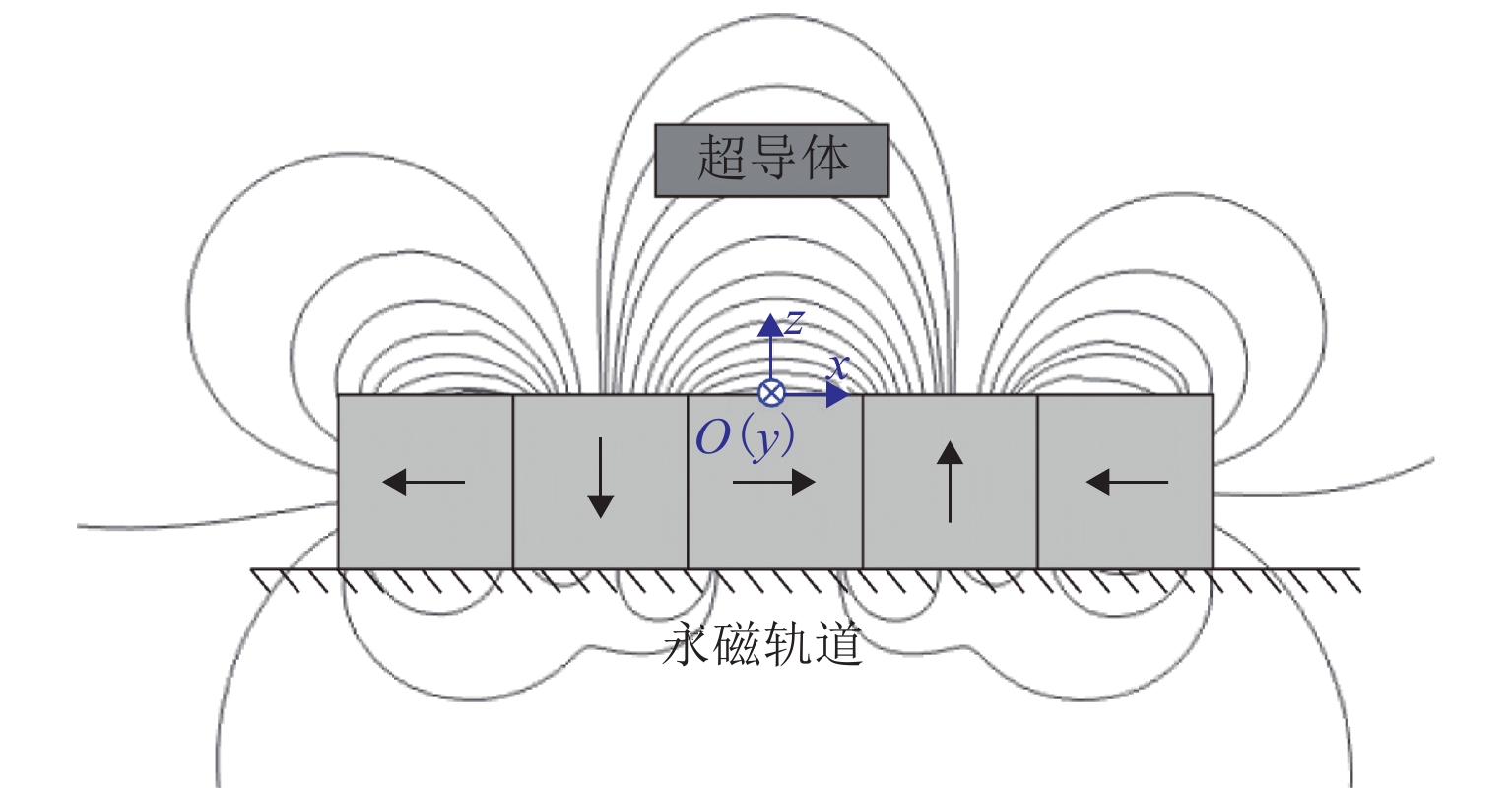
 下载:
下载:

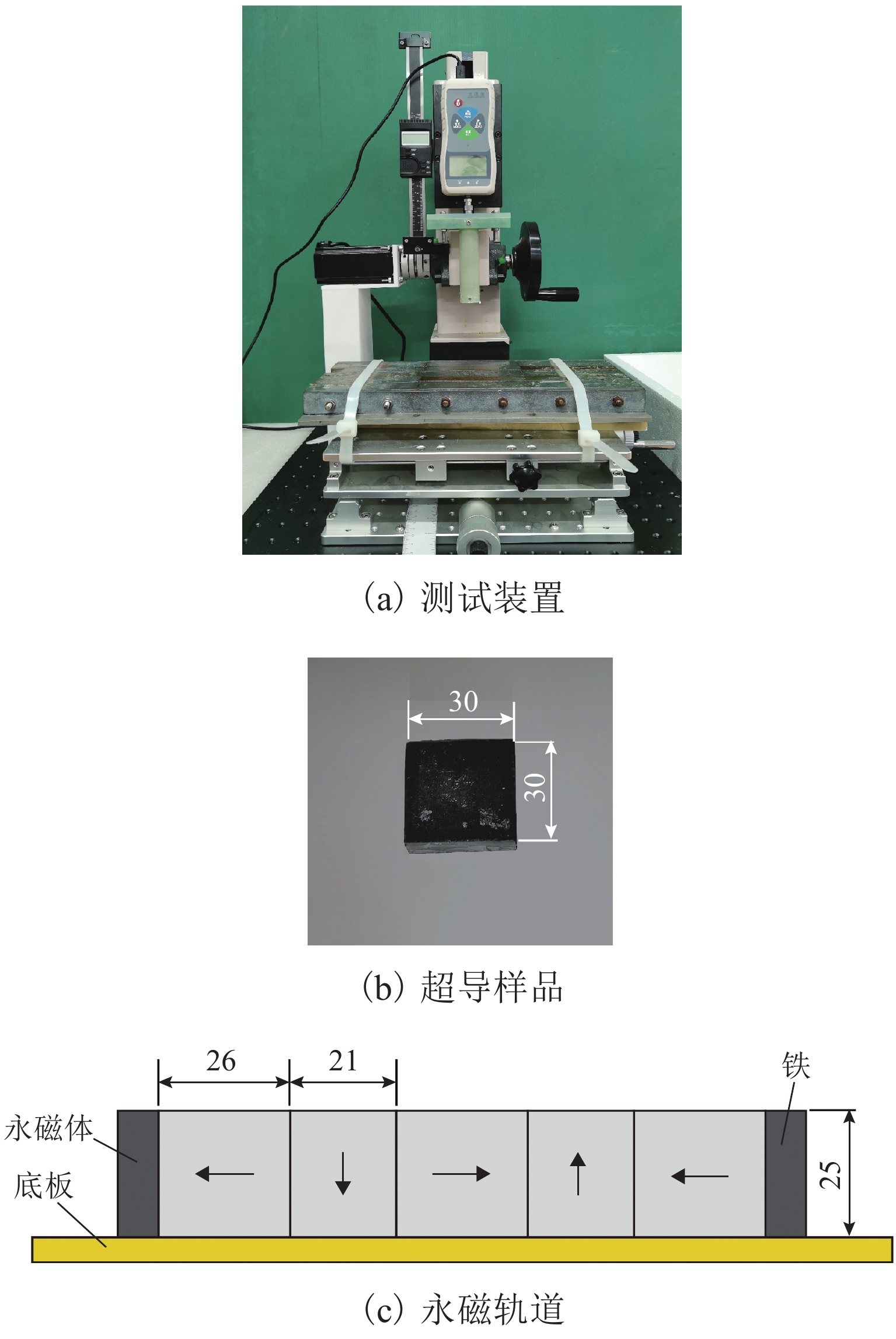
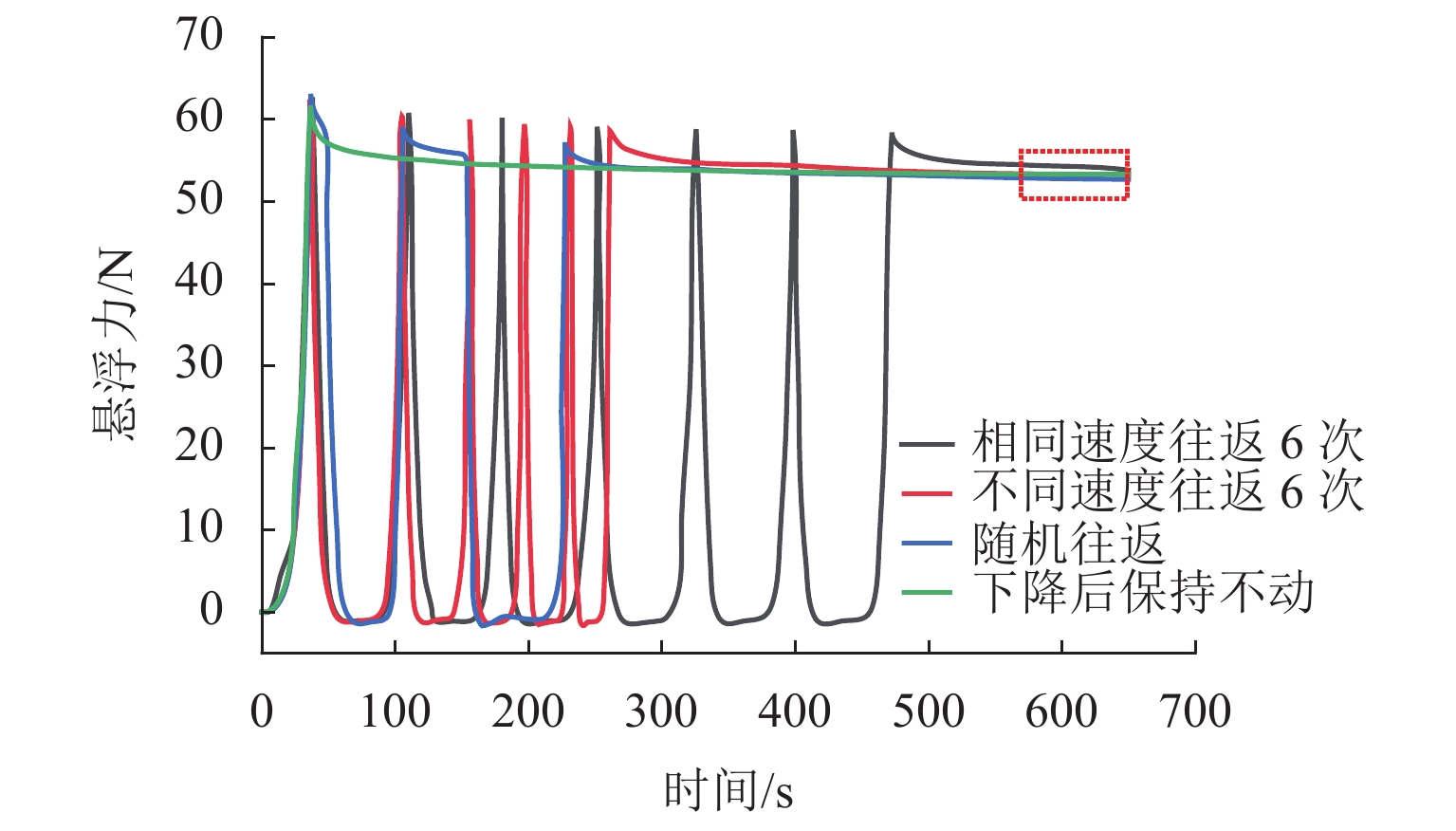

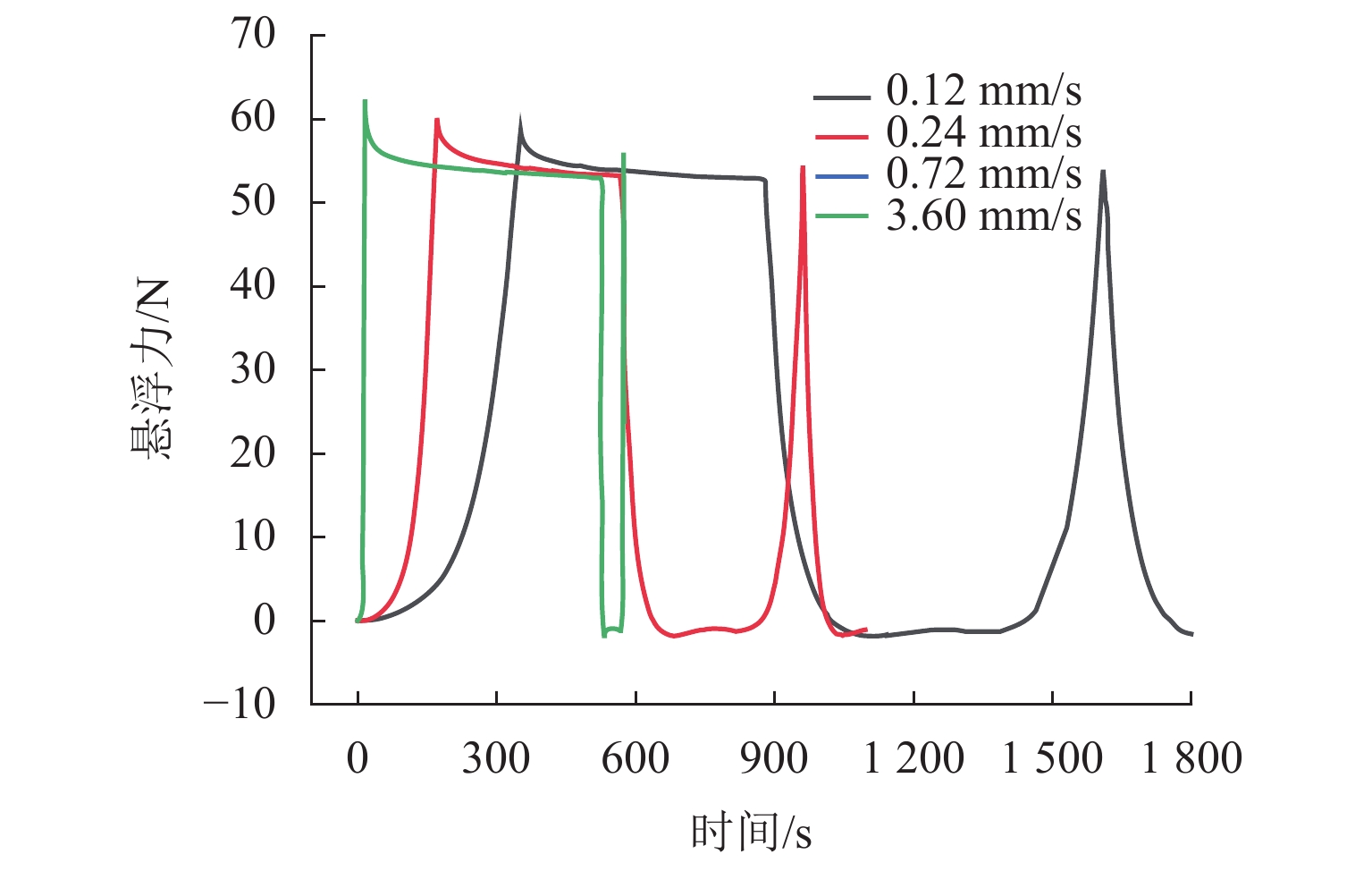

 百度学术
百度学术


